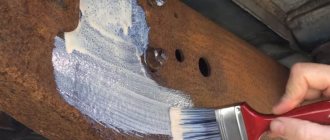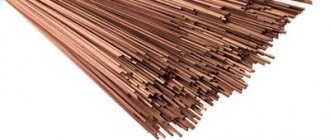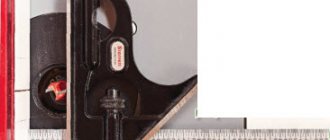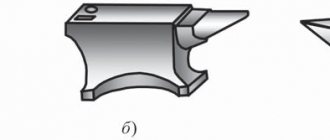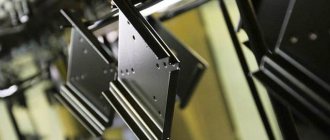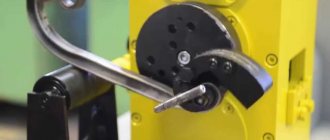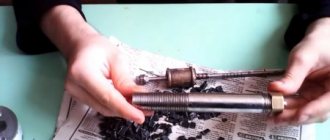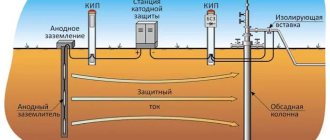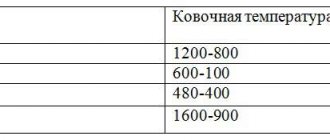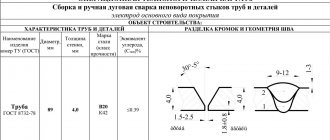- Technology and its types
- Cold and hot sheet metal stamping
- Cold stamping
- Hot stamping
- cutting
- Felling
- Hood
- Bending
- Punching
- Relief molding of metal is...
- Equipment and tools
- Classification of stamping equipment
- Crank presses
- Hydraulic
- Radial forging presses
- Electromagnetic
- Automatic lines
Let us pay attention to one of the most common methods of mass production of parts today.
Let's consider what metal stamping is: how it can be carried out, what can be obtained, what equipment and tools are used, and other related points. Below is only relevant and useful information that will help you choose the most suitable press. The main area of its modern use is industrial production, since in a short period of time it makes it possible to produce a large number of elements (including volumetric ones) - large or small, simple or medium in complexity configuration. Today it plays a key role in the development of industries such as automobile and shipbuilding.
Cold and hot sheet metal stamping
It is actively used in the conditions of modern mass production of serial elements, most often in a flat configuration, but a volumetric one is also possible. Giving the necessary geometric characteristics occurs due to the pressure applied by the press.
In turn, it is divided into two fundamentally different types, differing from each other in the temperature at which all necessary operations are carried out. In both cases, it is assumed that processing will be carried out using special equipment, down to individual strikers, punches, containers, and dies. Let's consider each of the methods in more detail.
Cold stamping
It is carried out without heating the material (hence the name). The equipment provides tremendous force and is sufficient to change the shape or separate part of the sheet. The result of the entire implemented sequence of actions is a part with the desired geometry, not subject to shrinkage.
In order to rationally save material, preliminary planning is carried out - with cutting in accordance with the current requirements of GOSTs. The correct choice of metal is also important: alloy and high-carbon steels, aluminum, and copper are considered the most practical in terms of processing performance.
Cold stamping is a process that can be divided into several operations. Let's look at them:
· Punching or cutting – allows you to create holes in the thickness of the sheet or separate its parts from the whole; in fact, these are two opposite actions, it’s just that in the first, the cut-off part is considered waste and goes to waste, and in the second, it is considered a finished product and goes further along the conveyor.
·Bending – due to placement on special stops, alignment of the matrix and subsequent pressure with a punch, the profile of the workpiece is changed to the required one (for example, a straight rod is made L-shaped).
· Extraction – it is often carried out in several successive transitions, each with its own template. This makes it possible to transform a sheet into a hemisphere, cylinder, cone and even more complex shapes simply by redistributing the source material.
·Flanging - in general, comes down to fixing and expanding the hole (the walls of the hole gradually move apart due to the applied force).
In most of these operations, an important role is played by such a characteristic as the size of the gap between the punch and the template. It must be selected depending on the metal: the thicker and stronger it is, the greater the distance should be, and vice versa. If this rule is neglected, the edges of the finished product may have burrs.
Hot stamping
It is carried out by heating the source material (as the name suggests - everything is logical). The method is simple and excellent for creating solid body elements, including large ones, which is why it is widely used in automobile, aircraft and shipbuilding.
The general manufacturing procedure is as follows:
· the workpieces are sent to the chamber of an electric or flame furnace;
· the temperature inside is raised to +1200 0C, and under such conditions even the most refractory types of steel or cast iron begin to change their state;
· a sheet prepared in this way (no longer solid, but elastic, almost liquid) is transferred to a template with special streams for drainage, in which it hardens and acquires the required shape with geometric dimensions;
· the forging is temporarily located in the space intended for this purpose between a pair of strikers - for deposition to the required amount.
Attention, the process of metal stamping using hot technology is quite productive and accurate, but still involves certain limitations. So, the thickness of the initial workpiece should be no more than 5 mm (otherwise it will heat up unevenly).
Now let's take a closer look at the individual operations: some of them have already been mentioned above, but in the context of a “cold” cycle, but they can be performed separately.
cutting
This is a procedure as a result of which the raw material is cut - either along a straight line, or along a curve, or along an even more complex trajectory. It can be performed at different stages of production, both at the starting stage and at one of the finishing stages. The working tools are special scissors or an industrial guillotine. As a result, the whole sheet is divided into the required number of parts.
Felling
This operation is similar to the previous one in that it is carried out using similar devices, only they move along a closed circuit, due to which a metal body of a certain shape is separated. This is the finished part - it is sent to the container, all that remains is to polish it (although this is not always required).
Hood
Impact on the source material in all three directions. In several passes, a three-dimensional product is obtained from a flat workpiece - a hemispherical, conical, cylindrical or even box-shaped structure, and a solid one, which has the most positive effect on its strength.
Bending
In the general case, creating a curved profile from a straight one, most often U, V, G, U-like, although more complex ones, such as S-shaped, are also possible. The whole point is in the nature of the impact, and it is point-based: the sheet is laid on the template and pressed with force on it with a punch at certain points, which is why a change in configuration is achieved without a dangerous break.
Punching
The reverse procedure of cutting: the press operator makes several successive cuts, resulting in a closed loop element, but it is not a final product, but a waste product. The desired object is what remains “around”, and the round, oval, square or polygon itself is sent to waste. In this way, various perforated structures are made.
Relief molding of metal is...
This operation should be given special attention, because it is quite specific. Because when it is performed, the geometric dimensions of the outer contour of the original workpiece remain the same, but the individual elements inside change. Let’s say you can make a convex side, conditionally dividing the part into several parts, or, conversely, a concave “ditch”. The main thing is that the integrity is not compromised and the reliability characteristics are not reduced.
ROLLER BENDING
Metal bending on rollers, in other words, metal rolling, is a technology based on the possibility of deforming metal sheets and products in a certain direction with the required number of radial deformation gaps. This method is not expensive, so it is often used in industrial enterprises and workshops. The material is placed in the gripping zone of special dies - rollers, and then, passing through them, the output is metal pipes and rolls, cone-shaped and cylindrical products, etc. The method is fast, expensive and depends on the size of the batch. For rolling, specialized profile bending and sheet bending machines are used.
Classification of stamping equipment
By drive, a modern, popular, most often used press:
· either hydraulic,
· or crank.
Although there are also more specific designs, usually necessary for the manufacture of parts of a specific cross-section, say, round or square, or for performing operations automatically, without operator participation. The main thing is that they comply with interstate standards and use the material rationally.
Now let's look at the most common types of machines.
Crank presses
They can be with one, pair or four working bodies. Each of them operates by converting torque into movement and has the following kinematic chain:
· V-belt transmission,
· clutch for starting,
· set of washers,
· shaft,
· connecting rod that regulates the stroke.
The slider moves back and forth; if the force is not applied to its center, this makes it possible to ensure the asymmetry of the finished product, and therefore to implement even a complex configuration; if there are 2 or 3 of them, then the first one is external and fixes the workpiece, and the rest are internal, and they carry out drawing and other operations.
Hydraulic
In their case, stamped metal is produced by the movement of a pair of cylinders, the difference in size of which determines the force applied to the surface. This is powerful equipment capable of providing maximum performance, pumping pressure up to 2000 tons. The circulation of the working fluid in it is started and maintained by pumps equipped with electric drives.
Radial forging presses
This equipment is focused on hot technology, as it is equipped with a furnace that preheats the ingots. Due to the increase in temperature, the workpieces become pliable for uniform compression.
These machines make it possible with sufficient productivity to produce products of round, square, rectangular or complex cross-sections, and with different diameters.
Electromagnetic
Parts produced by stamping of this type differ greatly in their nomenclature. These can be the smallest elements of watches, or very large cases. And all because the current strength and field are not a problem to adjust for pressure with the required intensity, and modern software allows you to program and implement even the most complex trajectory of movement of the actuating part, and with a variable nature of the impact of the core.
PRICES
| Prices (aluminum, stainless steel, ferrous metals, galvanized steel, brass, copper, etc.) | Thickness | From 1000 gb | 501-999 gibs | 51-500 gib | Up to 50 gibs |
| Workpiece length: up to 500 mm | Up to 3 mm | 10 rub. | 12 rub. | 14 rub. | 20 rub. |
| 4 - 6 mm | 11 rub. | 14 rub. | 17 rub. | 24 rub. | |
| 7 - 10 mm | 13 rub. | 16 rub. | 20 rub. | 29 rub. | |
| Workpiece length: from 500 to 1500 mm | Up to 3 mm | 15 rub. | 19 rub. | 24 rub. | 35 rub. |
| 4 - 6 mm | 17 rub. | 22 rub. | 28 rub. | 42 rub. | |
| 7 - 10 mm | 19 rub. | 26 rub. | 33 rub. | 51 rub. | |
| Workpiece length: from 1500 to 2500 mm | Up to 3 mm | 21 rub. | 30 rub. | 39 rub. | 62 rub. |
| 4- 6 mm | 24 rub. | 35 rub. | 46 rub. | 75 rub. | |
| 7 - 10 mm | 27 rub. | 40 rub. | 54 rub. | 90 rub. |
Automatic lines
These are entire multifunctional complexes designed to solve the most common problems. Often they are capable of performing, if not all basic operations, then at least several, and do not require assistance from the operator. Even metal stamping is removed without human intervention. And if they are equipped with numerical program control, the functions of the maintenance personnel are generally reduced to a minimum, because it is not even necessary to monitor the correct execution of the program. Although control, management and immediate adjustments remain very convenient thanks to the presence of a touch screen.
Equipment can be emphasized as classic mechanical or modern electronic, budget-friendly and allowing the implementation of one or two procedures, or future-oriented. There is a choice, and we will be happy to help you decide. We have already examined in detail the types of metal stamping and current technologies. I am ready to analyze your tasks as part of a free consultation, suggest the optimal press based on it, and provide this machine at a mutually beneficial price - please contact us.
WHAT DOES THE COST OF METAL BENDING DEPEND ON?
The cost of bending sheet metal to order in Moscow depends on a number of factors. Approximate prices are shown in the table below. Check with our specialists for the final price.
The price in the table is for 1 gigabyte including VAT. The minimum possible price is from 4,000 rubles, it can be completed urgently on the day the application is submitted. If it is not possible to send drawings in DXF or DWG format, then our specialists will assist in their development.
The cost of services is influenced by the following factors:
- Thickness and weight of the workpiece. Bending thick sheets requires more time and production capacity.
- Bending length. In the process of performing long bending, a large number of different capacities are used, so the price will be higher.
- Urgency of work. If necessary, work takes place in a short time in several shifts, however, this increases the cost of the work.
AREAS OF APPLICATION
Custom sheet metal bending services are in demand in many industrial areas of our lives. Let's list a few of them:
- Construction;
- Industry;
- Design and decoration;
- Furniture;
- Promotional Products;
- Metal fencing;
- Industrial parts and blanks;
- Metal cases;
- Technique;

